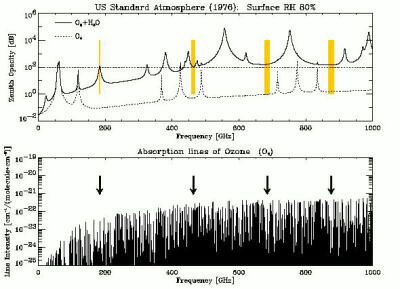Remote sensing of Clouds
CLOUDS -- A Cloud and Radiation Monitoring Satellite
Jungang Miao, Georg Heygster
Projektförderer: EU
Cirrus clouds are global in nature and occur primarily in the upper troposphere and lower stratosphere. These clouds are composed almost entirely of ice crystals. Information on cirrus cloud parametres is crucial to the development of cirrus cloud forecast models, the upgrading of real-time global cloud analysis, and the investigation of cloud feedback in global climate change. Recently, radiometry in the submillimetre band (up to 1000 GHz) has been shown to be a very effective tool in sensing cirrus clouds parametres. The simulation studies of Evans et al. show that the sensitivity of submillimetre radiometry to the total columnar ice content increases with frequency and that at frequencies above approximately 500 GHz the radiometric sensitivity is high enough to measure cirrus cloud properties. For the submillimetre package within the frame of the CLOUDS satellite, four channels are selected within the frequency range of 100-1000 GHz (see Figure 5); three of them are located in atmospheric windows near 463, 683 and 874 GHz; one is on the wing of the 183 GHz water vapor line, with the intention to determine the atmospheric background emission for the three high frequency channels. The center frequencies, the bandwidths and the intermediate frequencies of these channels are selected minimizing the influences caused by variations in the atmospheric temperature and water vapor profiles and by ozone absorptions. All channels but the one at 183 GHz are designed with double polarizations. In order to enhance the capability of this submillimetre package in detecting cloud ice near the freezing level, two other channels near 150 and 220 GHz are added, which are designed with double polarizations too.

Abb.5: Channels selected for cirrus measurements
Inhalt: